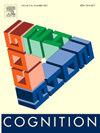空间与顺序位置在工作记忆中的关联:SPoARC效应的多层次元分析
IF 2.8
1区 心理学
Q1 PSYCHOLOGY, EXPERIMENTAL
引用次数: 0
摘要
当人们被要求记住单词、字母、数字或图像等任意序列的项目时,他们会在工作记忆中将这些项目空间化,形成一条水平的心理线。这项研究是对这种被称为空间位置反应码(SPoARC)效应或顺序位置效应(OPE)的现象的首次荟萃分析。为此,我们查阅了关于这个主题的24项行为研究中的21项的原始数据。对嵌套在实验中的参与者进行了多水平荟萃分析,两者都用作水平。在确认了SPoARC效应的存在后,我们分析了它作为四个特征的函数:备忘录的大小和性质,备忘录的呈现速度和探测器的分类类型。结果表明:(a) SPoARC效应随备忘录的性质而变化,我们认为这突出了语音过程在WM空间化中的重要性;(b)当每个项目的呈现速度在3秒左右或以上时,SPoARC效应最大;(c)当参与者被要求注意备忘录的顺序结构时(无论何时使用时间分类任务),SPoARC效应增强。确认订单信息与WM空间化之间的联系。本文章由计算机程序翻译,如有差异,请以英文原文为准。
Linking space and ordinal position in working memory: A multi-level meta-analysis of the SPoARC effect
When individuals are asked to keep in mind arbitrary sequences of items such as words, letters, numbers or images, they spatialize them in working memory forming a horizontal mental line. This study is the first meta-analysis of this phenomenon known as SPoARC (Spatial Positional Response Codes) effect or OPE (Ordinal Position Effect). For this purpose, we had access to the raw data of 21 of the 24 behavioral studies ever published on this topic. A multilevel meta-analysis was performed with participants nested within experiments, both used as levels. After confirming the existence of the SPoARC effect, we analyzed it as a function of four features: the size and nature of the memoranda, the pace of presentation of the memoranda and the type of classification of the probes. Results showed that (a) the SPoARC effect varied as a function of the nature of the memoranda, which we suggest highlights the importance of phonological processes in WM spatialization, (b) the SPoARC effect was the largest when the presentation pace was around 3 s per item or above and (c) the SPoARC effect increased when participants were asked to pay attention to the ordinal structure of the memoranda (whenever a temporal classification task is used), confirming the link between order information and WM spatialization.
求助全文
通过发布文献求助,成功后即可免费获取论文全文。
去求助
来源期刊

Cognition
PSYCHOLOGY, EXPERIMENTAL-
CiteScore
6.40
自引率
5.90%
发文量
283
期刊介绍:
Cognition is an international journal that publishes theoretical and experimental papers on the study of the mind. It covers a wide variety of subjects concerning all the different aspects of cognition, ranging from biological and experimental studies to formal analysis. Contributions from the fields of psychology, neuroscience, linguistics, computer science, mathematics, ethology and philosophy are welcome in this journal provided that they have some bearing on the functioning of the mind. In addition, the journal serves as a forum for discussion of social and political aspects of cognitive science.
 求助内容:
求助内容: 应助结果提醒方式:
应助结果提醒方式:


